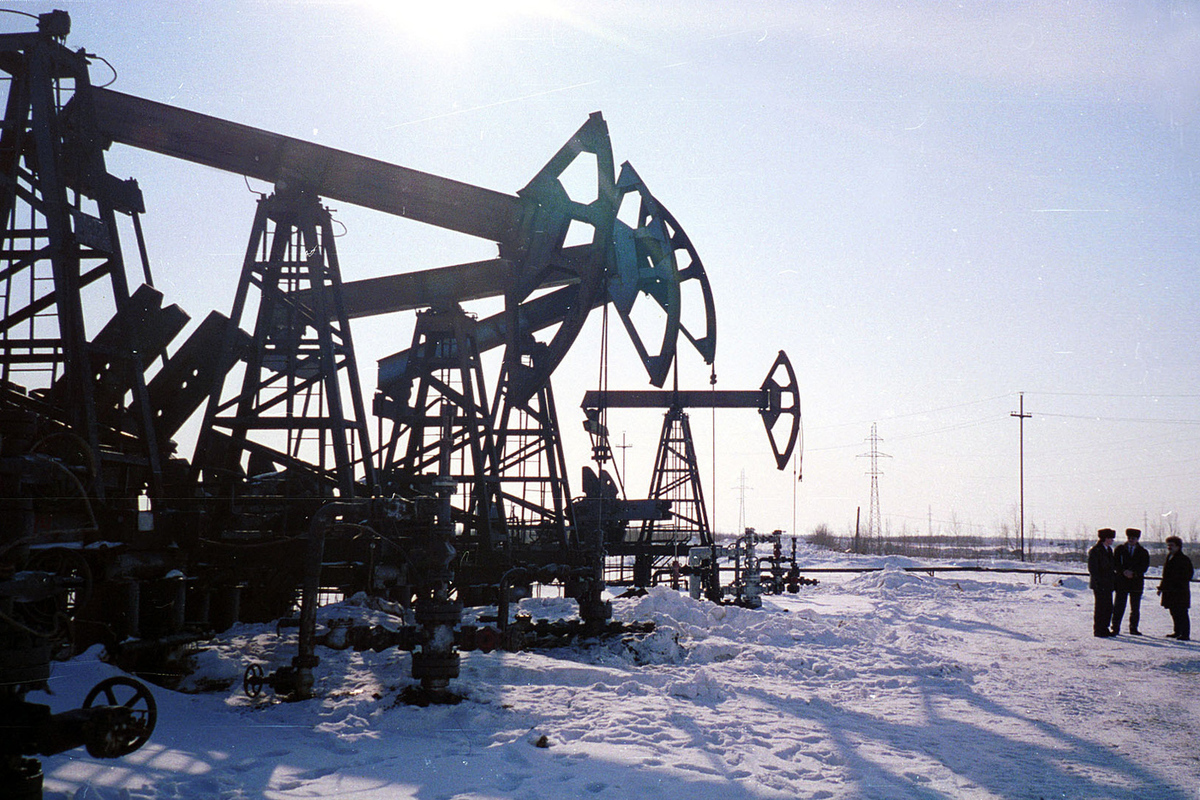Oil prices continued to fall: Russia is threatened with a depreciation of the ruble
[ad_1]

“Black gold” prices threaten the economies of mining countries
Oil prices are falling again. The cost of contracts for the North Sea Brent brand has fallen to summer lows: if in early September a “barrel” of this grade soared in price to almost a hundred bucks, now it costs less than $82. The future of commodity prices will be decided by OPEC members, whose meeting is scheduled for the end of November. The alliance will have to make a difficult verdict: continued production restrictions will support the barrel, but will reduce producers’ revenues. For Russia, a new round of oil price reduction threatens another rise in the dollar exchange rate and a fall in the ruble.
Brent prices fell 7% in the first week of November to the lowest levels seen in mid-July, when demand for hydrocarbons is usually reduced due to seasonal fluctuations. The approach of a long winter period could reverse this trend. Moreover, the prolongation of the military conflict between Palestine and Israel promised to accelerate the prices of “black gold” to $100 per barrel. Arab exporters could theoretically cut off supplies through the Strait of Hormuz and even movement through the Suez Canal, which risked causing a serious shortage of fuel resources on the European continent, especially on the eve of the onset of winter frosts.
However, the situation in the energy market has not reached a critical stage. The world’s main hydrocarbon exporters have not yet been drawn into the fuel war, which makes it possible to maintain balance on the exchange floors. “Perhaps stock speculators took a break and abandoned long-term investments in energy stocks, expecting to receive much more income due to the closure of transport routes,” says Alexander Shneiderman, head of the Alfa-Forex department.
However, the concern of producing countries about the fall in raw material prices is beyond doubt. Evidence of this is the next OPEC meeting scheduled for November 25-26. The alliance members plan to hold a meeting in person (after the start of the pandemic, such meetings were held via video link), which indicates the serious attitude of the organization’s members. The decision made at this meeting will determine the global future of the oil market.
The main word will be given to Saudi Arabia, which confirmed the limitation of the production of “black gold” at its fields – until the end of 2023, Riyadh promises to limit production and exports by 1 million barrels per day. Russia is also ready to reduce supplies in the same volumes. Theoretically, the artificial creation of a fuel shortage on international exchanges should return quotes to growth. But how will it work out in practice?
“The state of the global economy is not yet conducive to growth in demand for energy resources. Prices may be on a falling curve,” says Dmitry Alexandrov, head of the analytical research department at IVA Partners. — The military-political situation and the monetary policy of the West threaten to lead to stagnation of the economic development of the continent. One can count on a sharp increase in the price of oil only in the event of a military escalation in the Middle East or in the event of a transition to easing the policies of European central banks, which, in my opinion, can be expected no earlier than the middle of next year.”
“At the upcoming OPEC meeting, the key issue will be the extension of existing agreements on production cuts. Saudi Arabia and Russia will insist on maintaining production restrictions, but other producing countries may advocate increasing quotas in order to have time to increase current revenues from hydrocarbon exports,” believes BitRiver financial analyst Vladislav Antonov.
Higher oil prices are certainly beneficial for Russia, as this increases our country’s export revenues. At the same time, too high prices – $100 per barrel of Brent and above – can have a negative impact on demand and threaten to reduce sales volumes. According to the American agency Bloomberg, in recent months, domestic suppliers have exported 3.5 million barrels of oil per day, which was a record since last year. Considering that the current difference between Brent and Urals is less than $10, the optimal price range for our country is $70-80 per barrel. Approximately the same quotes are included in the forecast of the federal budget of the Russian Federation for 2024. At the same time, as Aleksandrov believes, it will be much more profitable for Russia not only to have stable commodity prices above $80, but also to gradually reduce the discount provided to Asian and African buyers. Our country can achieve this by switching to independent transportation, sales and insurance of maritime transport, which allows us to distance ourselves from Western sanctions attacks.
[ad_2]
Source link






